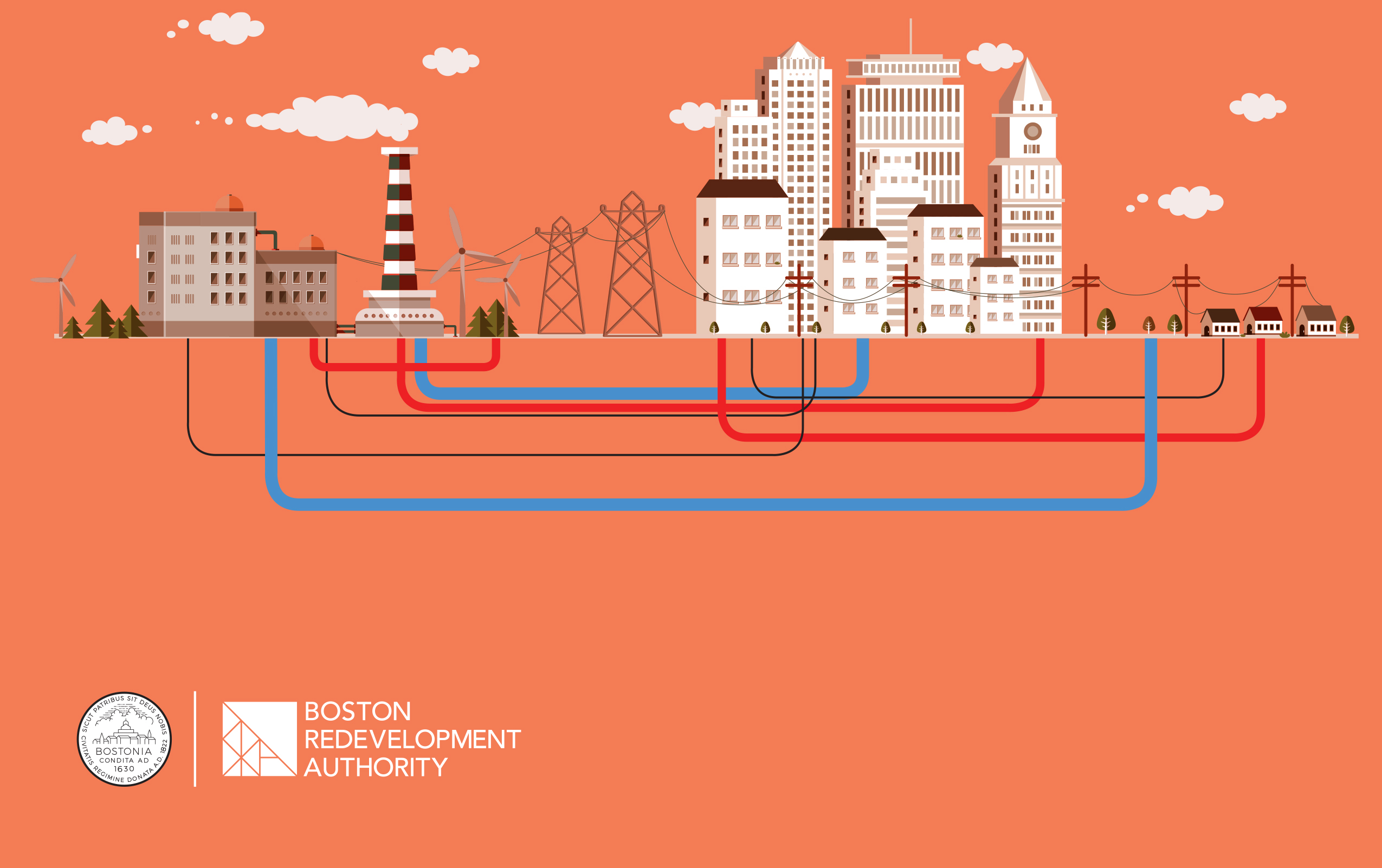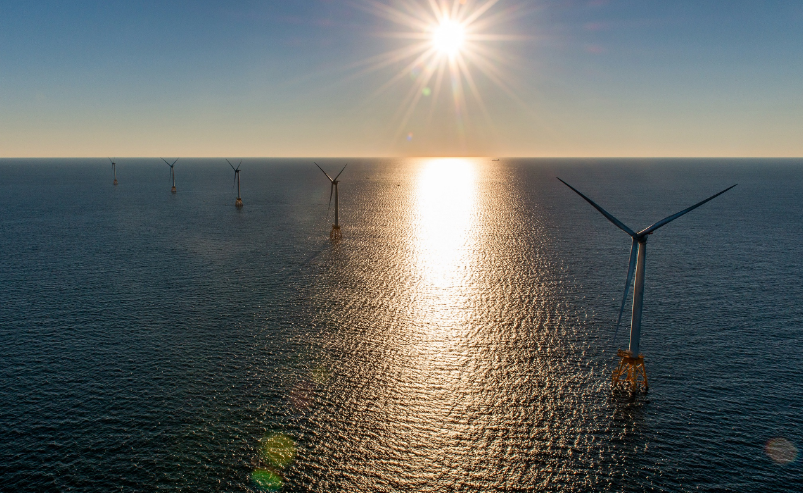Two years ago, the Boston Planning & Development Agency (BPDA) and the City of Boston launched the development of a Boston Smart Utilities Vision, built upon the research and analysis process (and fellowship) funded by the Barr Foundation (see “New Report Positions Boston for Next Wave of Energy Solutions”). The goal of the Vision is for new development in Boston to include utilities and infrastructure that are more sustainable, resilient, equitable, and affordable, to help the City meet its climate mitigation and resilience goals.
Achieving this Vision requires transforming the business-as-usual model of development planning across four utility sectors—energy, water, transportation, and telecommunications. After considerable collaboration between City departments, developers, and other stakeholders, BPDA now has two key tools to implement this Vision—a Smart Utilities Policy, and Smart Utility Standards.

Why Transform a City Development Process?
First, some context for why we believe that this is a necessary and prudent shift in how we approach development in our City.
Knee-high water at Long Wharf after the March 2018 Nor’easter that flooded downtown Boston illustrated the need to develop resilient solutions to prepare our City for climate change. But flooding is just one of the effects of these increasingly common extreme weather events.
Power outages across the state caused by the same Nor’easter did not affect Boston this time. However, we know how disruptive outages can be, from the 2012 blackout in the Back Bay caused by a transformer failure to widespread blackouts in New York and New Jersey after Superstorm Sandy.
We also know that new approaches to integrated design are necessary to achieve greater use of distributed and other clean energy sources, which will help us meet the City’s climate goals.
So how does implementing a Smart Utilities Vision help Boston prepare for and mitigate climate change? The Smart Utility Policy will help deploy the needed technology to achieve these goals. For example, green infrastructure can be installed throughout the city to help collect greater amounts of stormwater and prevent flooding on our streets. In addition, district energy microgrids that provide power to residents and business so that they do not experience power outages can be included in the planning of new districts and neighborhoods. This technology will also help the City in the transition to carbon neutrality by 2050.
There are many challenges in deploying these new technologies, including the fact that water, telecommunications, and energy systems must coexist under our streets. The Boston Smart Utilities Vision faced the challenge of meeting our climate goals while grappling with the reality of limited space under our streets by seeing it as an opportunity to develop a new approach for integrated design of these systems.
Sustainable, Resilient, and Equitable Economic Development: The Benefits of the Smart Utilities Vision
Development of the Boston Smart Utilities Vision and the work to implement it is guided by an overarching set of goals:
- Sustainability & Efficiency: Incentivize utilities that are easier to build, maintain and upgrade, minimizing the need for repetitive street openings, as well as utilities that help the city transition away from fossil fuels.
- Equity: Increase the access to more efficient and better quality of utility services, and reduce energy, water, and telecommunication costs for residents and businesses.
- Resiliency: Harden infrastructure against extreme weather events like flooding and heat waves, and use technologies that are more flexible and help meet resident and businesses needs more locally.
- Economic Development: Attract businesses through world-class utility services, and improve business continuity through reduced utility service interruptions.
- Innovation: Prepare the City for the integration and deployment of new smart technologies in the future.

The Boston Smart Utilities Vision supports several City-wide strategic plans, including Imagine Boston 2030, GoBoston 2030, Resilient Boston, and Climate Ready Boston.
A Synergistic Approach: Collaboration Among Multiple Agencies and Departments
Flooding and power outages are not the only reasons to rethink smarter planning for utilities. Space under our streets also needs to accommodate telecommunications and transportation technologies that improve traffic management, alleviate congestion, and enhance safety. A future that supports all of these technologies requires enlarging the lens through which each individual technology is approached.
Led by the BPDA, the Boston Smart Utilities Steering Committee involved seven departments and agencies. This extraordinary collaboration resulted in two implementation tools that will help change the “business-as-usual” approach to development planning: one that enhances innovation and another that achieves coordinated planning under our streets across the four utility sectors.
Two Implementation Tools:Policy and Standards
The first implementation tool is the Smart Utilities Policy, adopted by the BPDA Board in June 2018. It calls for the integration of five smart utility technologies in new developments:
- District Energy Microgrids
- Telecommunications Utilidor
- Green Infrastructure
- Adaptive Signal Technology
- Smart Street Lights
The second tool is the Smart Utility Standards, a guide book similar to Boston Complete Streets, which sets forth standards for the design of utility infrastructure under the streets. These standards will serve as guidelines for the planning and coordination of utilities, including the needed infrastructure for the five smart technologies in the Smart Utilities Policy.
We are currently working closely with projects undergoing BPDA’s development review process to ensure that they are adopting these two implementation tools adequately. In the near future we will have a Smart Utilities Checklist that will guide project teams through these requirements.
Both the Smart Utilities Policy and the Smart Utility Standards will allow Boston to continue its progress to become a more resilient, carbon neutral city. Successful implementation of these new tools requires continued multi-stakeholder collaboration, and will benefit the residents of Boston in sustainable, resilient, and equitable ways.






